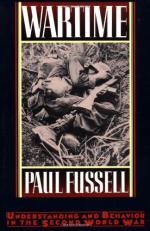
|
Chapters 1 - 3
• Before the war, America's military was only prepared for "light duty", focusing on highly mobile and lightly armed forces.
• Most Americans expected that the war would be won after a short series of victories, Pearl Harbor was viewed as an aberration.
• Precision bombing was expected to win the war by destroying enemy industry, but this proved unworkable due to casualties, anti-aircraft measures, German resiliency and inaccuracy of bombs.
• Blunders are relatively common in war due to its scale, fluidity and violence. Blunders range from the small to the large, and from the inconsequential to the catastrophic.
• Recognition error is a blunder wherein one force misidentifies another. This is very common, and especially so when dealing with forces from different nations.
• The frequency and seriousness of military blunders were consistently under reported.
Chapters 4 - 6
• Rumors were spread to ease boredom and provide entertainment, but their primary function...
|
This section contains 576 words (approx. 2 pages at 300 words per page) |

|




